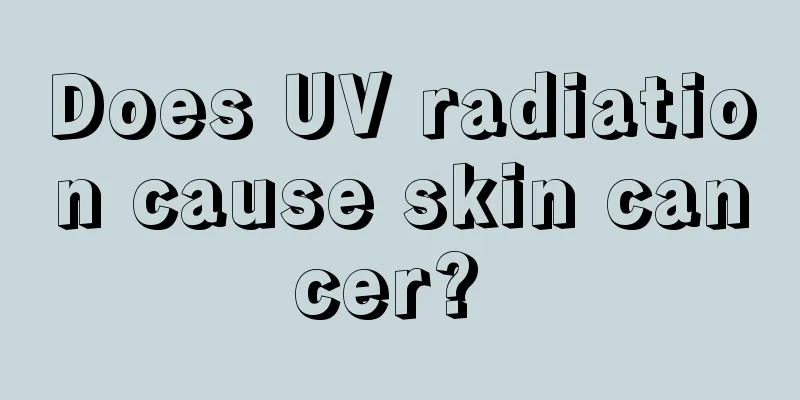Does UV radiation cause skin cancer?

|
Usually we encourage everyone to do a good job of sun protection, because long-term ultraviolet radiation can have a great impact on our skin health, and there is enough evidence from research to find that there is a certain relationship between ultraviolet radiation and skin diseases. 1. Chronic irritation and inflammation: Malignant skin tumors can occur and develop in scars, chronic ulcers, fistulas, and sinus tracts. Some Asian people are addicted to chewing tobacco or betel nuts, so squamous cell carcinoma is prone to occur in the mouth or lips. 2. Ionizing radiation: In the past, skin cancer occurred on the basis of radiation dryness caused by radiation workers' neglect of protective measures. In recent years, due to the improvement of radiation equipment and the advancement of radiation technology, especially the strengthening of various protective measures, occupational skin cancer has basically disappeared. However, some patients who received radiotherapy may still develop skin cancer in the radiation field several years later. 3. Daily exposure to the sun and ultraviolet rays: There is sufficient evidence to support that the interaction between UV radiation, the body's melanin protection and immune system function leads to the occurrence of skin cancer. When measuring human skin in sunlight, the parts of the skin that receive the greatest amount of ultraviolet rays are the head, face, back of the neck, and hands, and squamous cell carcinoma almost all occurs in these parts. The carcinogenic mechanism of ultraviolet rays may be that the photochemical effect changes the structure of cell DNA, while destroying the active antigen structure on the surface of lymphocytes, reducing the body's immune function, and leading to the occurrence of skin cancer with the joint participation of other carcinogenic factors. 4. Chemical carcinogens: About 100 years after Percivall first described the prevalence of scrotal skin cancer in chimney sweeps, it was discovered that workers regularly exposed to arsenic, tar, and asphalt were susceptible to skin cancer. The carcinogenicity of chemical substances can be divided into two periods, the initial period and the promotion period. The onset and consequences are closely related to the level of exposure to a specific substance or carcinogen, which is irreversible and involves cellular changes and genetics. Long-term exposure to the contact substance is required, which is related to the interval time. If there is no exposure for a long time, it can still be reversed and cancer will not occur. The time between the initiation phase and the promotion phase is very important and can result in two outcomes: skin cancer may or may not form. |
<<: What organs does the digestive tract include?
>>: Is there any harm in taking a shower every day
Recommend
How long can you live after liver cancer interventional treatment? Analysis of life expectancy issues of liver cancer interventional treatment
Liver cancer is a relatively common cancer for us...
Are brass jewelry harmful to the body?
Brass is a relatively common metal and has many u...
What is the cause of pain in the liver area after liver cancer surgery?
What is the cause of pain in the liver area after...
What harm does bladder cancer do to patients
There are many types of diseases, such as prostat...
What are the drugs for treating bladder cancer
Bladder cancer can be divided into many categorie...
What is the cause of vulvar atrophy? These factors cause it
Vulvar atrophy has a great impact on women, causi...
Can cervical cancer be transmitted to my daughter?
More and more female friends in life are affected...
What muscles can boxing exercise
Boxing is a sport that requires more strength. It...
Can I do manicure while breastfeeding?
Many women who love beauty will do manicures in t...
A detailed introduction to the five major symptoms of brain cancer patients
To avoid the trouble of brain cancer, we must fir...
Do I need to take anti-inflammatory injections after accessory breast surgery?
Accessory breast is a kind of tissue that women h...
It is important to understand the pathogenesis of gastric cancer
The pathogenesis of gastric cancer is very comple...
What are the main symptoms of chronic hepatitis?
Everyone knows the importance of the liver. At th...
Key points of psychological care for osteosarcoma
Osteosarcoma is a disease that mostly occurs in y...
Bladder cancer turned into late stage bone metastasis, with swelling all over the body
Bladder cancer and diabetes should take good care...









